- Hazel Growing Tips
- 1. Choose the right site
- 2. Prepare the soil
- 3. Planting hazel
- 4. Watering
- 5. Mulching
- 6. Pruning hazel
- 7. Fertilizing
- 8. Pests and diseases
- 9. Harvesting hazelnuts
- 10. Hazelnut varieties
- Choosing the Right Variety
- Climate
- Size
- Harvest Time
- Flavor and Nut Size
- Pollination
- Resistance to Diseases and Pests
- Planting Hazels
- Location
- Soil Preparation
- Planting Technique
- Spacing
- Maintenance
- Pruning Hazel Trees
- 1. Prune in the dormant season
- 2. Remove damaged or diseased branches
- 3. Thin out crowded branches
- 4. Shape the tree
- 5. Avoid excessive pruning
- 6. Use sharp and clean tools
- 7. Consider professional help
- When to Prune
- Pruning Techniques
- 1. Prune during the dormant season
- 2. Remove dead or damaged wood
- 3. Prune for shape and size
- 4. Thin out crowded branches
- 5. Remove suckers
- 6. Clean and sharpen pruning tools
- 7. Dispose of pruning waste
- 8. Seek professional advice if needed
- Popular Hazelnut Varieties
- Filbert Hazelnuts
- Varieties of Filbert Hazelnuts
- Growing Filbert Hazelnuts
- European Hazelnuts
- Question-answer:
- What are some tips for growing hazel trees?
- What are some common varieties of hazel trees?
- How do I prune a hazel tree?
- Can hazel trees tolerate different soil types?
- How long does it take for hazel trees to produce nuts?
- Are hazel trees susceptible to any diseases or pests?
- Video: 4 Basic Pruning Cuts, Demonstrated & Explained!
Hazel, also known as hazelnut, is a versatile and popular plant that can be grown in various climates and soil types. It is a deciduous shrub native to Europe, Asia, and North America, and is known for its delicious nuts and attractive foliage. The hazel plant belongs to the genus Corylus and the family Betulaceae.
When it comes to growing hazel, it is important to choose the right variety for your location. There are several varieties of hazel available, each with their own unique characteristics. Some varieties are more cold-hardy, while others prefer warmer climates. It is best to consult with a local nursery or gardening expert to determine which variety is best suited for your area.
Proper pruning is essential for maintaining the health and productivity of hazel plants. Pruning should be done in late winter or early spring, before new growth starts. This helps to promote new growth and improves the overall shape and structure of the plant. The pruning process involves removing dead or diseased wood, as well as thinning out overcrowded branches.
In addition to its nuts, hazel is also valued for its ornamental qualities. The plant has beautiful leaves that turn vibrant shades of yellow and orange in the fall. It can also be grown as a hedge or windbreak, as it forms a dense and attractive barrier. Hazel can be propagated through seeds or by taking cuttings, making it a relatively easy plant to grow and propagate.
Hazel Growing Tips
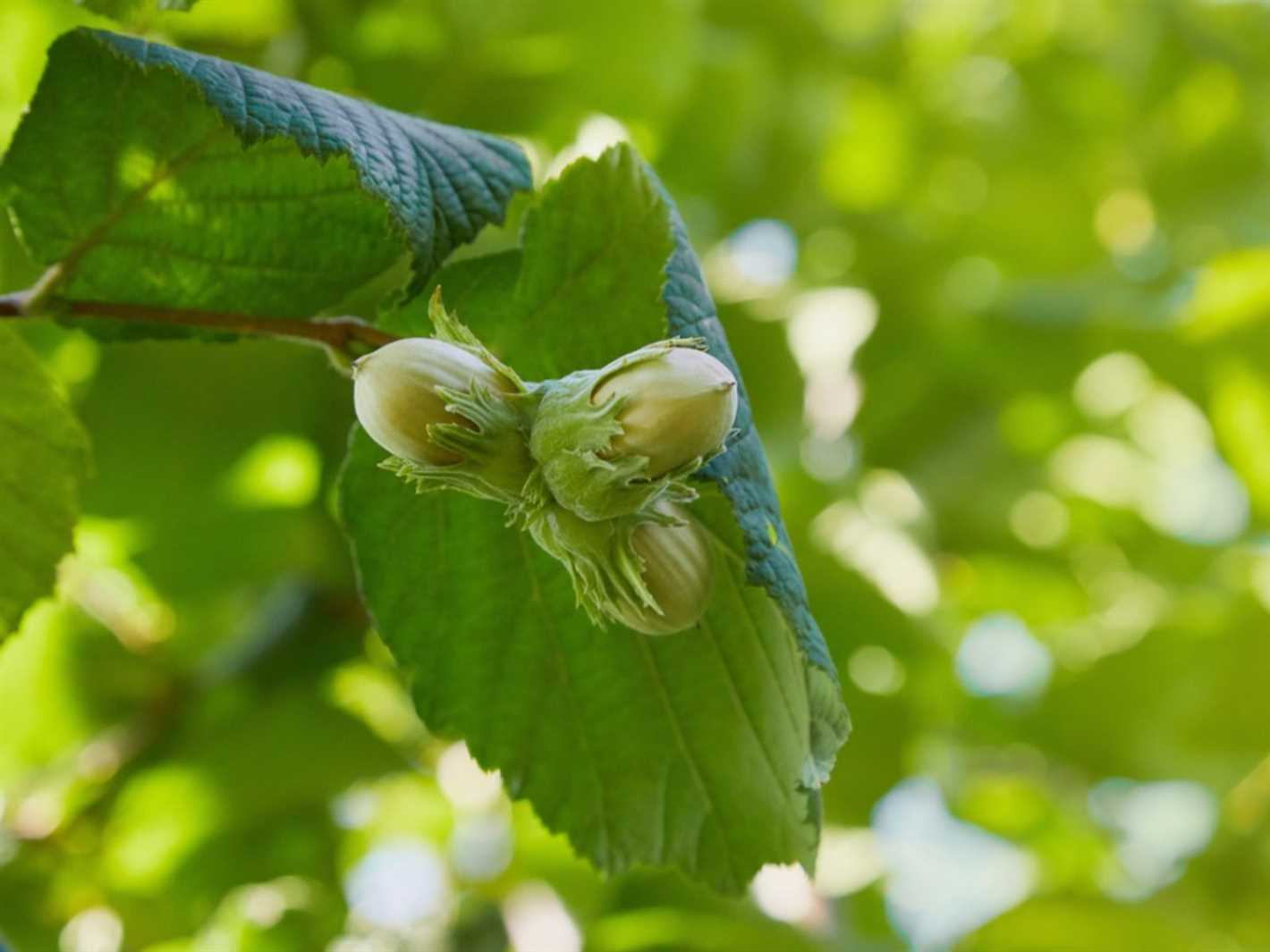
1. Choose the right site
Before planting hazel, it is important to choose the right site. Hazel trees prefer a sunny location with well-draining soil. Avoid areas that are prone to waterlogging, as this can lead to root rot.
2. Prepare the soil
Prepare the soil by removing any weeds or grass and loosening it with a fork or garden tiller. Hazel trees prefer a slightly acidic to neutral soil pH, so you may need to adjust the pH levels if necessary.
3. Planting hazel
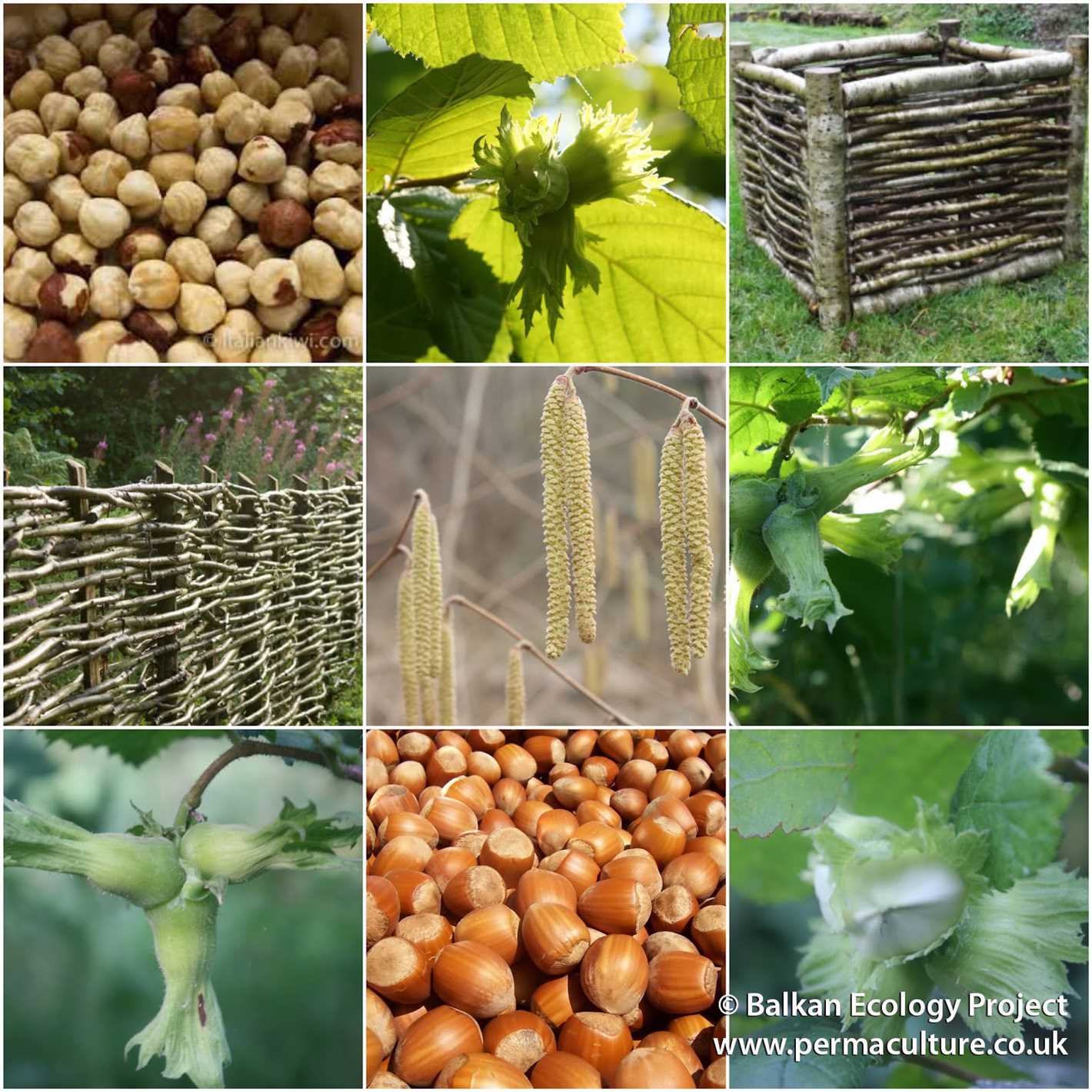
Plant hazel trees in early spring or late autumn, when the soil is moist and temperatures are cool. Dig a hole that is twice as wide and deep as the root ball of the tree. Place the tree in the hole, backfill with soil, and firm it gently.
4. Watering
Water the hazel tree regularly, especially during dry periods. Keep the soil evenly moist but not waterlogged. Avoid overwatering, as this can lead to root rot and other diseases.
5. Mulching
Apply a layer of organic mulch around the base of the tree to help retain moisture and suppress weeds. Avoid piling the mulch against the trunk, as this can lead to rot and disease.
6. Pruning hazel
Hazel trees require minimal pruning. Remove any dead, damaged, or diseased branches as necessary. Pruning hazel trees in late winter or early spring before new growth starts is ideal.
7. Fertilizing
Apply a balanced fertilizer, such as a 10-10-10 or 14-14-14, to the hazel tree in early spring before new growth begins. Follow the instructions on the fertilizer packaging for proper application rates.
8. Pests and diseases
Monitor the hazel tree for common pests and diseases, such as aphids, caterpillars, powdery mildew, and bacterial canker. Use appropriate insecticides or fungicides as needed, following the instructions on the product label.
9. Harvesting hazelnuts
Harvest the hazelnuts when the husks turn brown and begin to split open. Gather the nuts from the ground, as they naturally fall when ripe. Remove the husks and allow the nuts to dry before storing them.
10. Hazelnut varieties
There are several different varieties of hazelnuts available, each with its own unique characteristics. Some popular varieties include Barcelona, Tonda di Giffoni, and Butler. Research the different varieties to find the one that suits your needs and growing conditions.
Following these tips will help you successfully grow hazel trees and enjoy a bountiful harvest of hazelnuts!
Choosing the Right Variety
Choosing the right variety of hazel is essential to ensure a successful and productive harvest. There are several factors to consider when selecting the variety that best fits your needs:
Climate
The climate in your area plays a significant role in determining which hazel variety you should choose. Hazels thrive in temperate regions with mild winters and cool summers. Some varieties are more tolerant of cold temperatures, while others prefer a warmer climate. It is important to select a variety that is well-suited to your local climate to maximize growth and productivity.
Size
The size of the mature hazel tree is another important factor to consider. Hazels come in different sizes, ranging from compact varieties suitable for small gardens to larger varieties that can grow up to 20 feet tall. The available space in your garden or orchard will dictate the size of hazel variety you should choose. It is crucial to select a variety that can grow comfortably within the available space and allow for proper maintenance and harvesting.
Harvest Time
The timing of the harvest is an essential consideration when choosing a hazel variety. Different varieties have different harvest times, which can vary from early autumn to late winter. If you have specific preferences or plans for the hazel harvest, such as selling the nuts or using them for personal consumption, selecting a variety with a harvest time that aligns with your goals is crucial. Additionally, selecting multiple varieties with staggered harvest times can help to extend the hazel nut harvest season.
Flavor and Nut Size
The flavor and nut size of hazel varieties can vary significantly. Some varieties produce sweet and flavorful nuts, while others may have a more mild taste. Similarly, the size of the nuts can range from small to large. Consider your personal preferences and any specific culinary or commercial applications you have in mind when choosing a hazel variety.
Pollination
Most hazel varieties are not self-pollinating and require cross-pollination with another compatible variety to bear fruit. When selecting a hazel variety, it is important to choose a companion variety that blooms at the same time for successful pollination. Some varieties may also require multiple pollinators for optimal fruit set. Be sure to check the pollination requirements of the hazel variety you are considering and plan accordingly.
Resistance to Diseases and Pests
Lastly, consider the disease and pest resistance of the hazel variety. Some varieties are more susceptible to common hazel diseases, such as Eastern Filbert Blight or Crown Gall, while others may have better resistance. Additionally, certain varieties may be more attractive to hazelnut weevils or other pests. Choosing a variety with good disease and pest resistance can help to ensure a healthier and more productive hazel crop.
By considering these factors when selecting a hazel variety, you can choose the right one that suits your specific needs and environment. Whether you are looking for a compact variety for a small garden or a large-scale variety for commercial production, there is a wide range of hazel varieties available to meet your requirements.
Planting Hazels
When planting hazels, there are a few key considerations to keep in mind to ensure their successful growth. Hazels are best planted in the late winter or early spring when the ground is not frozen and the weather is mild.
Location
Choose a sunny or partially shaded location for your hazels. They prefer well-drained soil and thrive in areas with good air circulation.
Soil Preparation
Before planting, prepare the soil by removing any weeds, rocks, or debris. Hazels prefer a slightly acidic soil with a pH between 5.5 and 6.5. If your soil is too alkaline, you can add compost or peat moss to amend it.
Planting Technique
Follow these steps to properly plant your hazels:
- Dig a hole that is twice as wide and deep as the hazel tree’s root ball.
- Loosen the soil at the bottom of the hole.
- Gently remove the hazel tree from its container and place it in the hole.
- Backfill the hole with soil, ensuring that the tree is planted at the same depth it was in its container.
- Press the soil around the tree’s base to secure it.
- Water the newly planted hazel thoroughly.
Spacing
When planting multiple hazel trees, make sure to space them at least 15-20 feet apart to allow room for their growth and to ensure adequate air circulation.
Maintenance
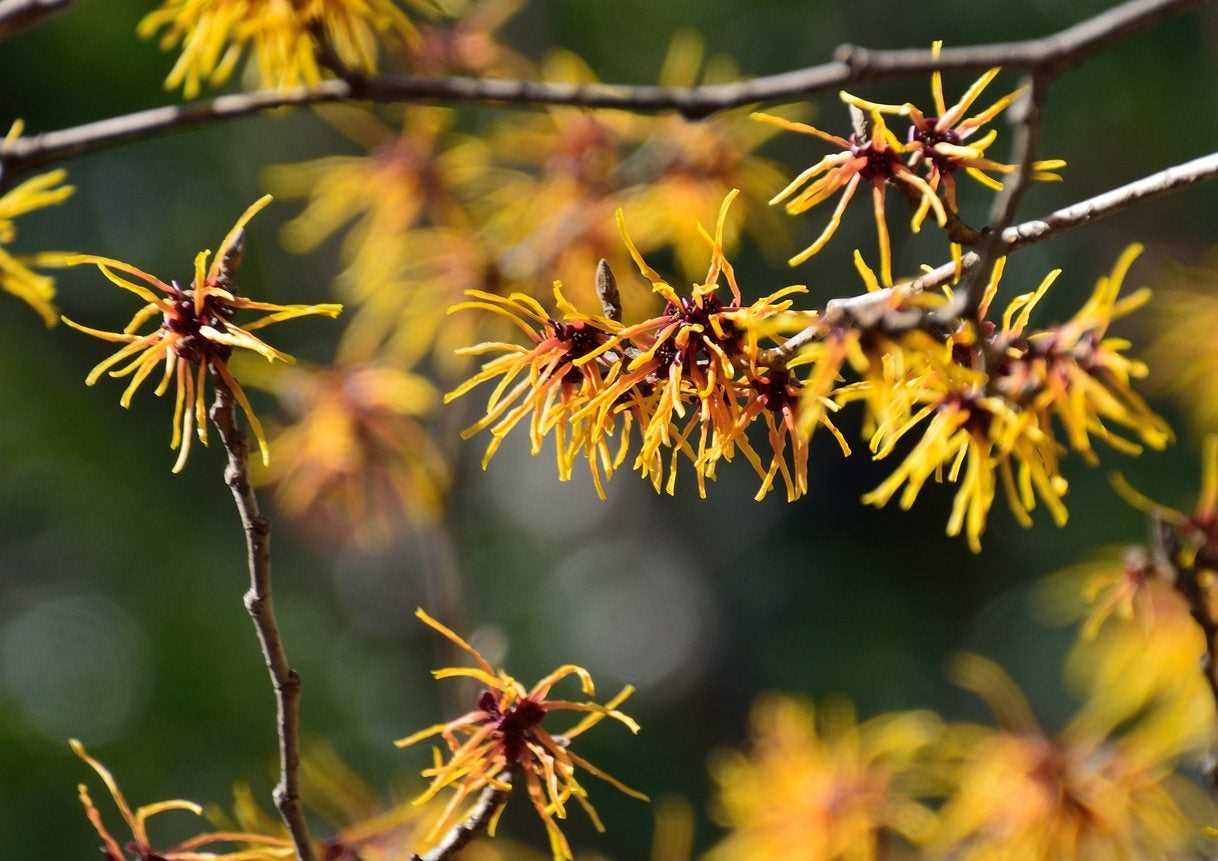
After planting, continue to water the hazels regularly, especially during dry periods. Apply a layer of organic mulch around the base of the tree to help retain moisture and suppress weed growth. Prune hazels in late winter or early spring to remove any dead, diseased, or crossing branches.
| Variety | Height (ft) | Spread (ft) | Pollinator |
|---|---|---|---|
| Hall’s Giant | 10-15 | 8-12 | Pollinates with other varieties |
| Twiggy | 6-8 | 6-8 | Pollinates with other varieties |
| Webb’s Prize Cob | 8-14 | 8-12 | Self-fertile |
By following these planting tips and techniques, you can ensure the successful growth and maintenance of your hazel trees.
Pruning Hazel Trees
Pruning is an essential practice for maintaining the health and productivity of hazel trees. Regular pruning helps to shape the tree, encourage the development of new growth, and remove any dead or diseased branches. Here are some tips and techniques for pruning hazel trees:
1. Prune in the dormant season
The best time to prune hazel trees is during the dormant season, which is typically in late winter or early spring before the new growth starts. Pruning during this time minimizes stress to the tree and promotes healthy regrowth.
2. Remove damaged or diseased branches
Inspect the hazel tree for any branches that are dead, damaged, or affected by disease. Prune these branches back to healthy wood, making clean cuts just above a bud or branch junction. Removing these branches will prevent the spread of disease and improve the overall health of the tree.
3. Thin out crowded branches
If the hazel tree has a dense canopy, it’s important to thin out some of the branches to allow better airflow and sunlight penetration. Remove any crossing or rubbing branches, as well as branches growing towards the center of the tree. This will improve the tree’s structure and reduce the risk of disease.
4. Shape the tree
Pruning can also be done to shape the hazel tree according to your preferences. Whether you want a rounded, vase-shaped, or open-centered tree, prune the branches accordingly. Start by removing any vertical or upward-growing branches to maintain the desired shape and form.
5. Avoid excessive pruning
While pruning is important, it’s crucial not to overdo it. Hazel trees are relatively tolerant of pruning, but excessive pruning can weaken the tree and reduce its ability to produce a good crop. Only remove what is necessary and maintain a balance between shaping the tree and preserving its vitality.
6. Use sharp and clean tools
Always use sharp and clean pruning tools to make smooth cuts and minimize the risk of infection. Sterilize your tools with disinfectant or rubbing alcohol before and after each use, especially when dealing with diseased branches.
7. Consider professional help
If you’re unsure about how to prune your hazel tree, it’s always advisable to seek professional help. An experienced arborist or horticulturist can provide guidance and ensure that the pruning is done correctly to promote the tree’s health and productivity.
By following these pruning tips and techniques, you can maintain the health and vitality of your hazel trees, and enjoy a bountiful harvest of delicious hazelnuts.
When to Prune
Pruning hazel trees is an important part of their care and maintenance. Knowing when to prune your hazel trees can help promote healthy growth and maximize crop yield. Here are some guidelines to follow:
- Early Spring: Pruning hazel trees in early spring, before new growth begins, is generally recommended. This allows the trees to recover from any winter damage and stimulates the growth of new and healthy branches.
- After Harvest: If you have grown hazel trees for their nuts, you can prune them right after the harvest. This is typically done in late summer or early autumn. Pruning after harvesting allows the tree to focus its energy on storing nutrients for the next growing season.
- Established Hazelnuts: Once your hazel trees are established, you can prune them during the dormant season. This usually occurs in late winter or early spring. Pruning during the dormant season helps maintain the tree’s shape, remove damaged or diseased wood, and increase light penetration to the center of the tree.
- Suckers and Waterspouts: Remove suckers and waterspouts, which are vigorous vertical shoots arising from the base or trunk of the tree, at any time during the year.
It is important to note that hazel trees have specific growth habits and pruning requirements depending on the variety and intended use. Always refer to specific guidelines for the variety you are growing and consult local experts for advice specific to your area.
| Pruning Objectives | Pruning Technique |
|---|---|
| Control height and spread | Prune the leaders and branches that are too long |
| Increase light penetration | Thin out and remove overcrowded branches from the center of the tree |
| Promote fruit production | Prune out weak, damaged, and non-productive wood |
| Improve tree health | Remove diseased and dead branches |
Note: Always use clean and sharp pruning tools when pruning hazel trees to minimize the risk of disease transmission and ensure clean cuts.
Pruning Techniques
Proper pruning techniques are essential for maintaining the health and shape of hazel bushes. Pruning helps to promote new growth, control size, and enhance overall productivity. Here are some pruning techniques to keep in mind:
1. Prune during the dormant season
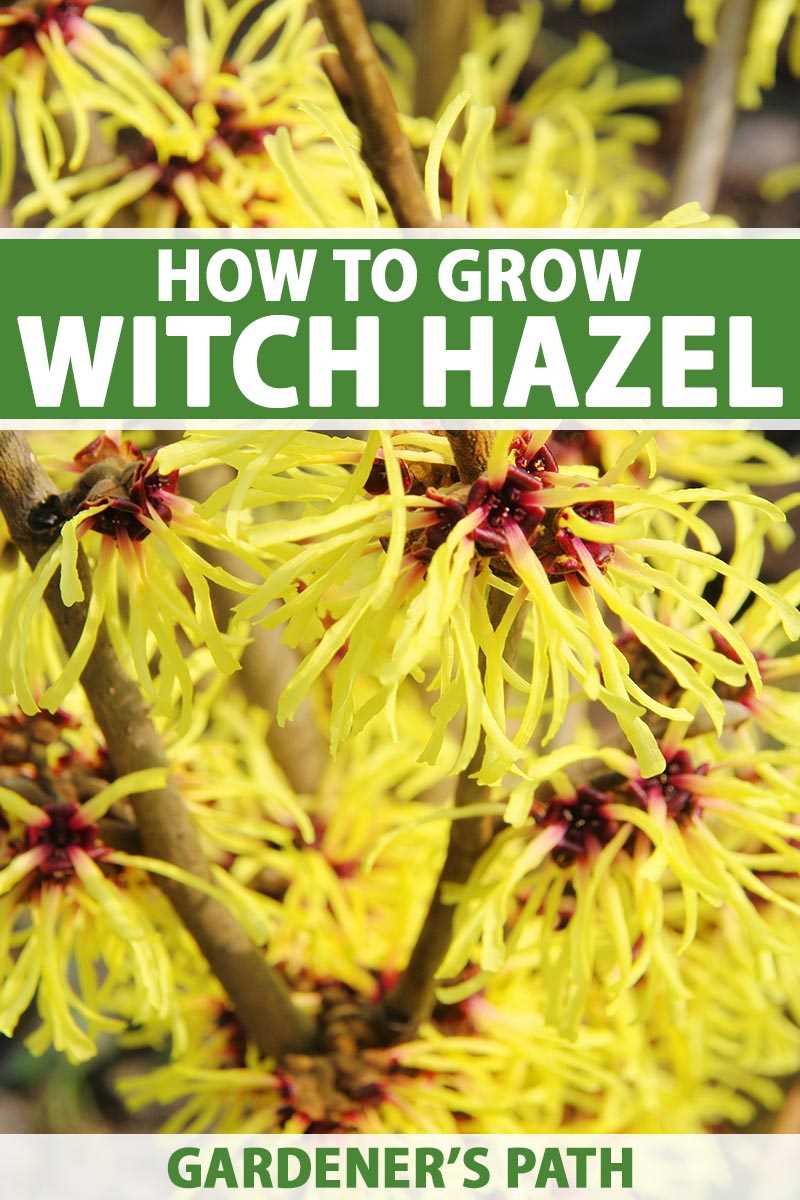
It is generally recommended to prune hazel bushes during the dormant season, which is late winter or early spring, before the buds start to break. Pruning during this time helps to reduce the risk of disease and encourages vigorous regrowth when the weather warms up.
2. Remove dead or damaged wood
Start by removing any dead, diseased, or damaged wood. This not only improves the overall appearance of the bush but also helps to prevent the spread of diseases. Make clean cuts just above healthy buds or branches to promote healing and new growth.
3. Prune for shape and size
To maintain a compact and well-shaped hazel bush, selectively prune branches that are crossing, rubbing, or growing inward. This helps to improve air circulation and light penetration, reducing the risk of pests and diseases. Avoid cutting back more than one-third of the plant at a time to prevent stress and shock.
4. Thin out crowded branches
If your hazel bush becomes overcrowded with branches, consider thinning them out. Remove the oldest and least productive branches to open up the canopy and allow more light to reach the inner parts of the bush. This will promote better growth and increase the yield of nuts.
5. Remove suckers
Hazel bushes tend to produce suckers or shoots that grow from the base or roots. These suckers can compete with the main plant for resources and nutrients. Regularly remove suckers to prevent them from taking over and weakening the main bush.
6. Clean and sharpen pruning tools
Before pruning hazel bushes, ensure that your tools, such as pruning shears and loppers, are clean and sharp. Dirty or dull tools can spread diseases and make pruning more difficult. Clean the tools with a mild disinfectant, sharpen the blades, and oil the moving parts for smooth operation.
7. Dispose of pruning waste
After pruning, dispose of the pruned branches and debris properly. Do not leave them lying around as they can harbor pests and diseases. Either compost the waste or dispose of it in a green waste bin according to your local regulations.
8. Seek professional advice if needed
If you are unsure about how to prune hazel bushes, it is always a good idea to seek professional advice. Contact a local horticulturist or arborist who can provide guidance based on your specific growing conditions and hazel variety.
By following these pruning techniques, you can maintain the health and productivity of your hazel bushes, ensuring a bountiful harvest of delicious nuts.
Popular Hazelnut Varieties
Hazelnuts, also known as filberts, are a popular nut that is enjoyed around the world. There are several different varieties of hazelnuts, each with its own unique characteristics and flavor profiles. Here are a few of the most popular hazelnut varieties:
Tonda di Giffoni: This Italian variety is known for its large size and rich flavor. It has a slightly sweet and buttery taste, making it a favorite for snacking and baking.
Barcelona: Originally from Spain, the Barcelona variety is highly prized for its intense flavor. It has a deep and nutty taste, making it perfect for use in desserts and confections.
Tonda Gentile Romana: Hailing from Italy, this variety is known for its delicate flavor and smooth texture. It has a slightly milder taste compared to other varieties, making it a versatile choice for various culinary applications.
Tonda di Cosenza: Another Italian variety, the Tonda di Cosenza is renowned for its sweet and flavorful nuts. It is often used in baking and enjoyed as a snack.
In addition to these varieties, there are many other types of hazelnuts grown in different regions of the world. Each variety has its own unique taste and characteristics, so it’s worth exploring different options to find the one that suits your preferences best.
Filbert Hazelnuts
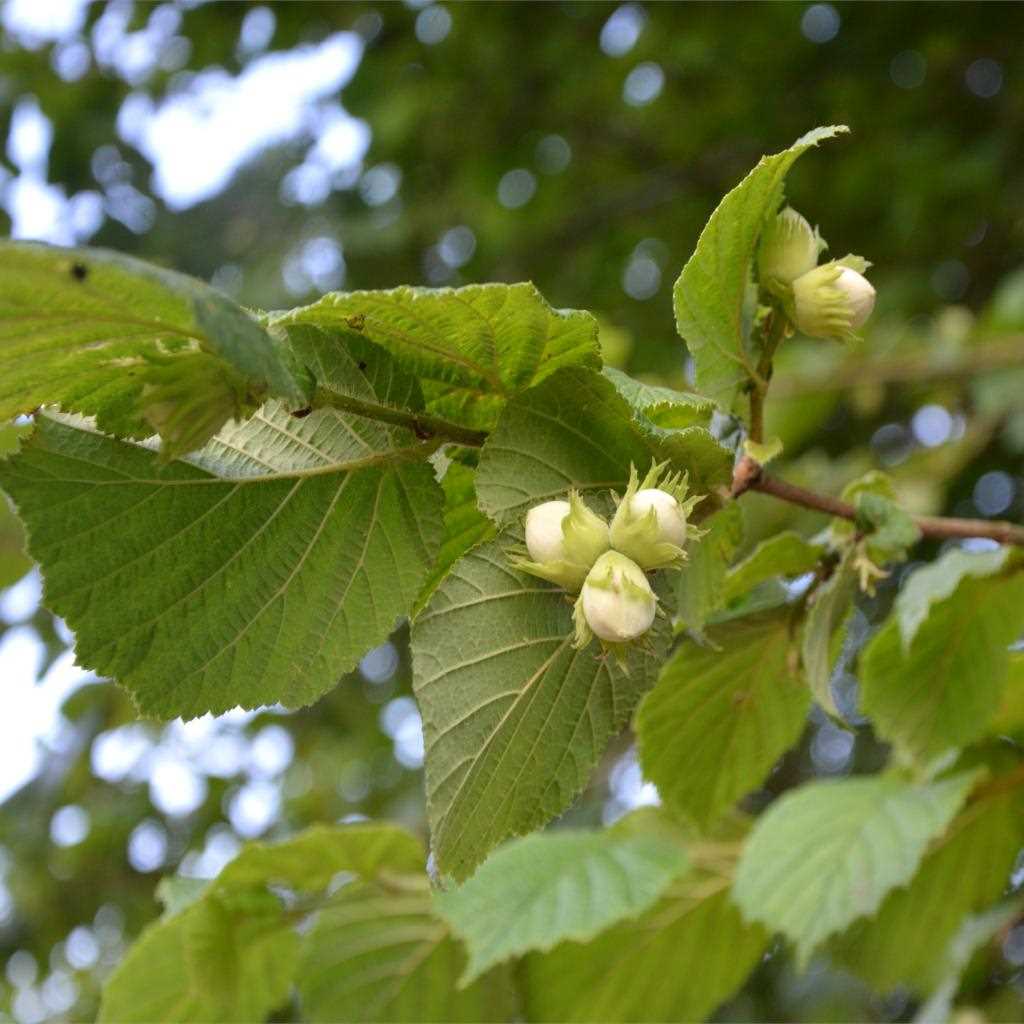
Filbert hazelnuts are a popular variety of hazelnuts that are delicious and nutritious. They are native to Europe and Asia and are known for their sweet, buttery flavor. Filbert hazelnuts are often used in a variety of culinary dishes and can also be eaten raw as a healthy snack.
Varieties of Filbert Hazelnuts
There are several popular varieties of filbert hazelnuts, each with their own unique qualities:
- Barcelona: This variety is known for its large size and excellent flavor. Barcelona filberts are often used in gourmet cooking and baking.
- Butler: Butler filberts have a slightly elongated shape and a rich, sweet flavor. They are often used in desserts and confections.
- Dorris: This variety of filbert has a round shape and a sweet, buttery taste. Dorris filberts are often eaten raw or used in baking.
Growing Filbert Hazelnuts
Filbert hazelnut trees are relatively easy to grow and can be a great addition to your garden. Here are some tips for growing filbert hazelnuts:
- Choose the right variety: Select a filbert hazelnut variety that is suitable for your climate and growing conditions.
- Plant in a sunny location: Filbert hazelnuts thrive in full sun, so choose a sunny spot in your garden for planting.
- Prepare the soil: Filbert hazelnuts prefer well-draining soil that is rich in organic matter. Amend the soil with compost before planting.
- Planting: Dig a hole that is wide and deep enough to accommodate the roots of the tree. Place the tree in the hole and backfill with soil, firming it down gently.
- Watering: Keep the soil evenly moist, especially during the tree’s first few years of growth.
- Pruning: Prune the tree during its dormant season to maintain its shape and remove any dead or diseased branches.
- Harvesting: Filbert hazelnuts are usually ready to harvest in late summer or early fall. Shake the branches gently to encourage the nuts to fall to the ground, then collect and dry them before storing.
Filbert hazelnuts can be a rewarding addition to your garden, providing you with a delicious and versatile nut that can be enjoyed in a variety of ways.
European Hazelnuts
The European hazelnut, also known as the common hazelnut or Corylus avellana, is a species native to Europe and western Asia. It is widely cultivated for its delicious nuts and ornamental value.
Characteristics
- The European hazelnut is a deciduous shrub that can grow up to 15 feet tall.
- It has bright green, toothed leaves that turn yellow in autumn.
- The shrub produces catkins in early spring, which then develop into clusters of edible nuts in autumn.
- The nuts are enclosed in a bristly husk, which splits open when fully ripe.
- European hazelnuts have a sweet, nutty flavor and are often used in confectionery and baking.
Growing European Hazelnuts
If you want to grow European hazelnuts, here are some tips to get started:
- Choose a sunny location for your hazelnut shrubs. They prefer full sun but can tolerate some shade.
- The soil should be well-draining and rich in organic matter. Hazelnuts have shallow roots, so proper drainage is crucial.
- Plant the shrubs in early spring or fall. Dig a hole that is slightly larger than the root ball, and place the shrub in it, ensuring that the crown is level with the soil surface. Backfill the hole and water thoroughly.
- Water the hazelnut shrubs regularly, especially during dry periods. However, avoid overwatering, as it can cause root rot.
- Prune the shrubs in late winter or early spring to remove dead or damaged branches and maintain a tidy shape.
- Fertilize the shrubs annually with a balanced fertilizer to promote healthy growth and nut production.
Popular Varieties
There are several popular varieties of European hazelnuts available:
| Variety | Description |
|---|---|
| Tonda di Giffoni | An Italian cultivar with large, flavorful nuts. |
| Webb’s Prize Cob | A British variety with large, plump nuts and good yields. |
| Butler | A popular American cultivar with medium-sized nuts and good disease resistance. |
Note: Make sure to check the specific growing requirements and adaptability of each hazelnut variety to your local climate and soil conditions before planting.
Question-answer:
What are some tips for growing hazel trees?
Some tips for growing hazel trees include planting them in well-drained soil, providing them with regular watering, and giving them enough space to grow. It is also important to prune hazel trees regularly to remove any dead or diseased branches and to promote healthy growth.
What are some common varieties of hazel trees?
Some common varieties of hazel trees include the American hazelnut (Corylus americana), European hazelnut (Corylus avellana), and Turkish hazel (Corylus colurna). These varieties differ in size, growth habit, and nut production.
How do I prune a hazel tree?
To prune a hazel tree, start by removing any dead or diseased branches. Then, thin out crowded branches to allow for better airflow and sunlight penetration. You can also prune hazel trees to shape them or control their size. It is best to prune hazel trees in late winter or early spring, before new growth begins.
Can hazel trees tolerate different soil types?
Hazel trees can tolerate a wide range of soil types, but they prefer well-drained loamy soil. They can tolerate slightly acidic to slightly alkaline soil pH. It is important to avoid heavy clay or waterlogged soil, as these can lead to root rot and other problems.
How long does it take for hazel trees to produce nuts?
Hazel trees typically start producing nuts when they are 3 to 5 years old. However, full nut production may not occur until the tree is 7 to 10 years old. The nut production can vary depending on the variety of hazel tree and growing conditions.
Are hazel trees susceptible to any diseases or pests?
Yes, hazel trees can be susceptible to diseases such as eastern filbert blight, crown gall, powdery mildew, and phytophthora root rot. They can also be attacked by pests like aphids, mites, hazelnut weevils, and squirrels. Regular monitoring and proper care can help prevent and manage these issues.







